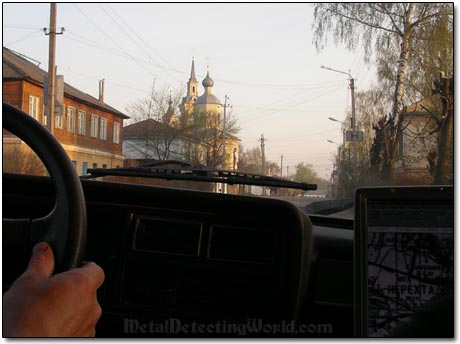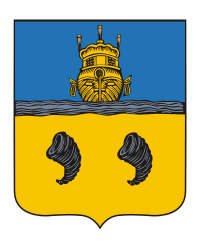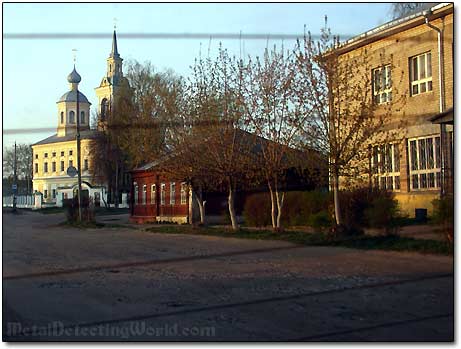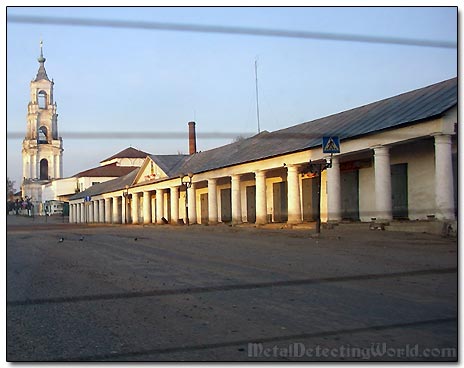Travel in Kostroma Region - Metal Detecting in Central Russia (Story 16)
Now we were passing through Nerekhta, one of the most historic cities of the region, which is situated in the very heart of ancient Russia in the cultural and geographic area known as "the Golden Ring of Russia" - most of its historic towns were not touched by World War II.
Entering the City of Nerekhta in Kostroma Region

In the coat of arms of Nerekhta, there is a ship stern with three lanterns and with the dropped ladders on a light-blue field. In the lower part of a shield, in a gold field, there are two black snail shells, meaning, that two rivers near this city teem with snails."
Coat of Arms of Nerekhta

BRIEF HISTORICAL FACTS:
Nerekhta is an old Russian city dated back to 1214. It is situated between Kostroma and Yaroslavl cities (a four hour drive northeast of Moscow). The town
is famous for its magnificent architecture and ancient churches and monasteries.
Apart from the monasteries, most of the churches in this area were either rebuilt or demolished during the Soviet years. St. Varvara Church, one of the survivors, was built in Rococo architectural style in 1770 and restored in the 1980s.
St. Varvara Church in the Background

In the 13th century, the town's economy was built on salterns. During the yoke of the Golden Horde and throughout the Time of Troubles, Nerekhta was severely damaged. Later, being devastated by Polish troops, the town could not revive for a long time. Only two salt wells out of twenty five were active.
The boost to the town's development was given by trade which was encouraged by its convenient location on the routes to Yaroslavl, Nizhniy Novgorod, and Suzdal. In the second half of the 18th century the first cotton manufactories were launched in Nerekhta. One cotton factory, built in 1761 by the merchants, has survived to this day. In 1778 Nerekhta became the principal town of a province. By the mid-19th century Nerekhta turned into a large textile provincial center.
In the city center, we drove by a Kazanskiy Cathedral which was built in 1713 by the order of Tsar Peter The Great. The 60-meter-high bell-tower was built in 1837-48. The merchant quarters and row of stalls, the former central market place, were built in 1836. The market had 97 merchant stalls operating at the start.
Bell-Tower of Kazanskyi Cathedral and Row of Merchant Stalls (ca. 1836)
